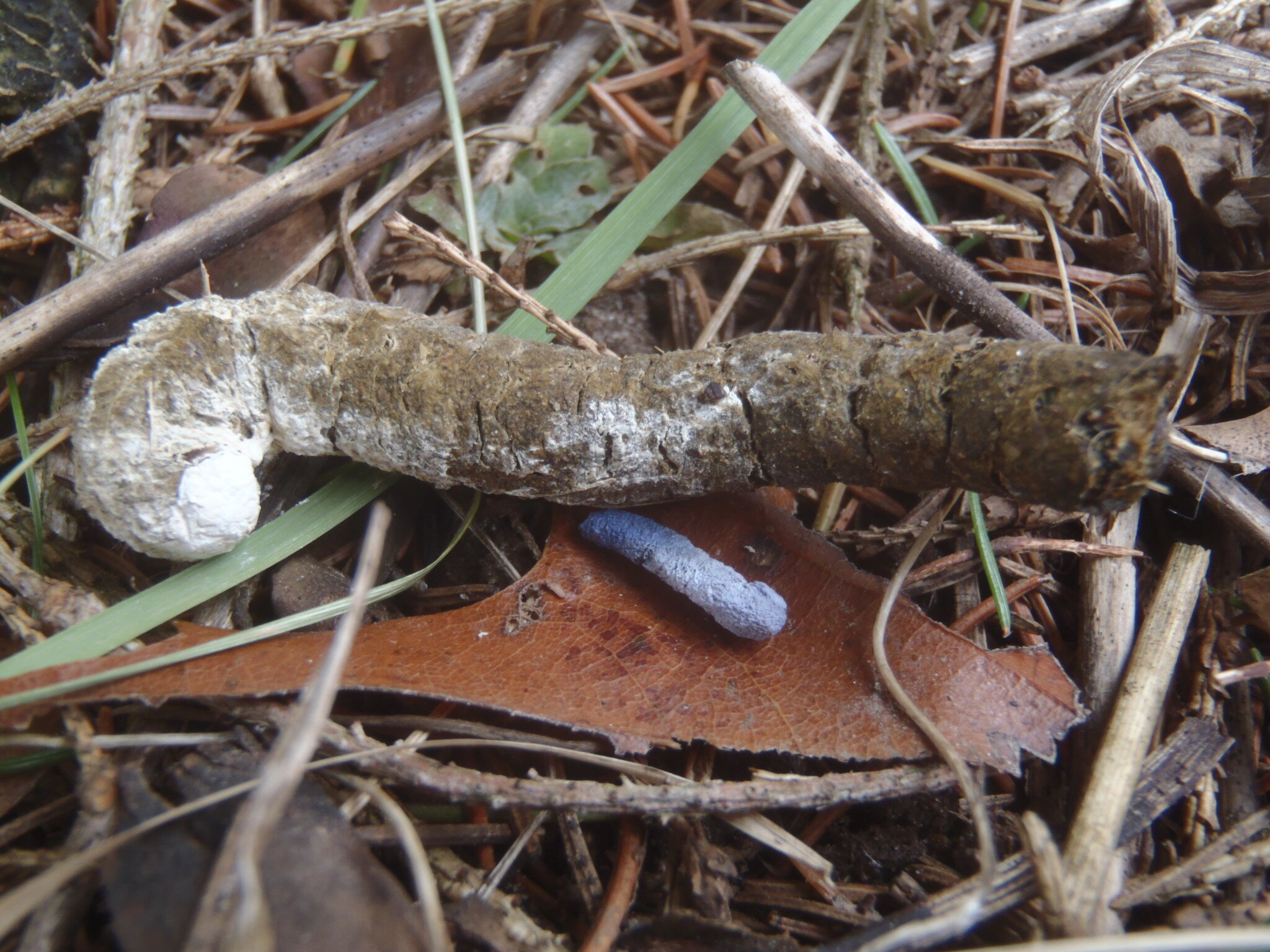Towards a better understanding of Turkey scat
Turkey scat found amidst the leaf litter. Blue scat below, unsure.
Wild Turkeys (Meleagris gallopavo) is a social bird who often hangs out in the woods with other Turkeys from within their flock, also called a “rafter”. Female Turkeys are called Hens, while juvenile males are Jakes, and adult males are called Toms. Turkeys seem like a slow bumbling bird, but they can run pretty fast if they need to, like when they see me coming across a field or slowly stalking through the woods. They can get up to speeds of 35 kmph! Thats faster than I am by far. Their flight can only carry these heavy birds for about 3 km or so, so the running seems to be preferred method of escape. They also have pretty good vision indicating how they see me coming from so far off.
About the scat though, which is why I am writing.. Tukeys eat many different things. They generally stick to seeds, nuts (especially acorns), fruits, insects, some small invertebrates, and some small vertebrates, though I think the verts are a little less commonly consumed. I found the scat pictured above in a Black Walnut (Juglans nigra) grove, and have read that Wild Turkeys like to eat those too. In fact, in my research for writing this I came across this passage in “Manual of Ornithology” by Proctor and Lynch, that Turkeys have been recorded as able to crush up to 24 walnuts (in the shells) in their gizzards in less than 4 hours! Those walnut shells are incredibly tough to crack and have used a hammer and brick anvil, or even a very sturdy specialized Walnut cracking machine.
Back to the point, I have seen Turkey scat in grain fields after the crop has been harvested, and sometimes within Pine plantations where the Turkeys like to roost. The female scat is clumpier, rounder, potentially a little curly, green-brown with some white uric acid splotched on the surface. Mark Elbroch denotes measurements of .5 – 1 cm in diameter.
The male scat is differently shaped through. Rather than clumpy bundles like the female Hens, the Jake and Tom scats are long, narrow and straightish. I often find them with a bit of a curve at the end giving them a sort of “J” shape with the curved end splotched with uric acid. The scat pictured above was about 7.5 cm long, and 1 cm in diameter.
My deeper motivations for writing this was because I was wondering why are the scats different? I imagine it is anatomy, but I am uncertain the details. So I set up camp on my couch with all my books with anything about Turkey anatomy, and physiology.
Birds and reptiles share a lot in common. Eggs are a biggy and because of eggs we can understand their scat better. The cloaca (Latin for “common sewer” or “public drain”), the single orifice which birds and reptiles use for both reproduction and excretion has to facilitate many things. For female birds it must pass an egg, so it is wider than the males cloaca. This extra width allows for the scat to clump and coil before being passed. For males though the cloaca only has to facilitate a narrow phallus so there is no need for a broad passage. The males scat then comes out long and tubular. As for the “J” shape? I still have no idea. Is it gravity as when the scat is falling from the cloaca?
And, why do birds have uric acid instead of urea like mammals you (didn't) ask? Well, urea is water soluble and uric acid is not. If the bird was still in the egg, and they passed urea, the urea would soon dissolve into the fluids in the egg and eventually create a toxic environment which would kill the little dumpling embryo. Instead the embryo passes the uric acid which crystalizes, becomes solid, and remains stable within the egg without poisoning the soon-to-be bird inside. Evolutionary genius!
As for that other, smaller, blue scat in the image above? I don’t know, but I imagine a bird due to the uric acid, maybe eating grapes? What do you think?

